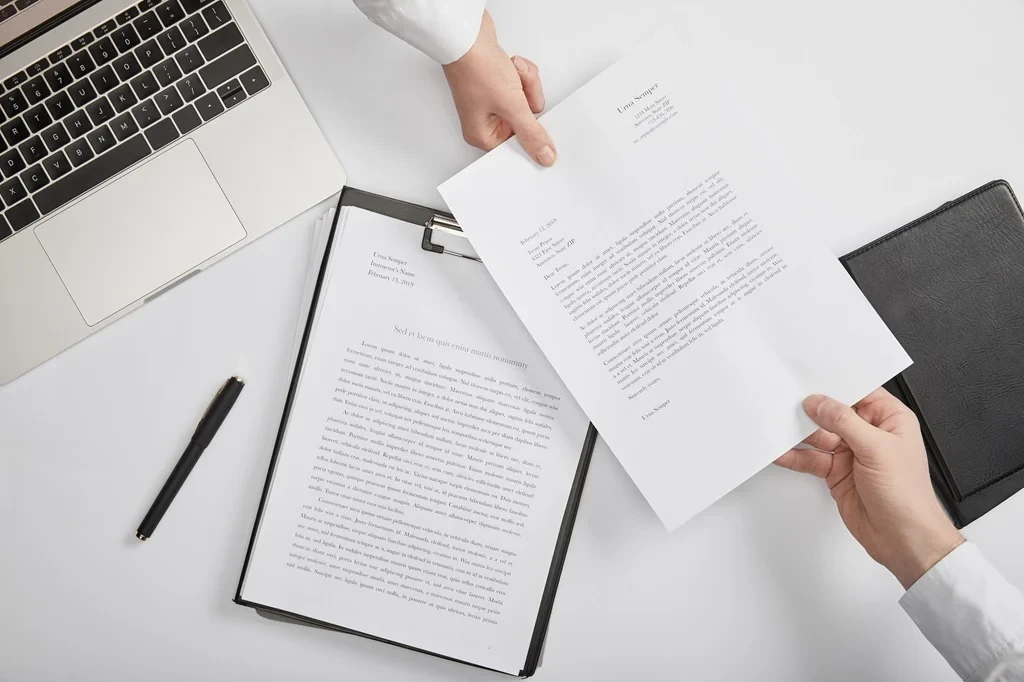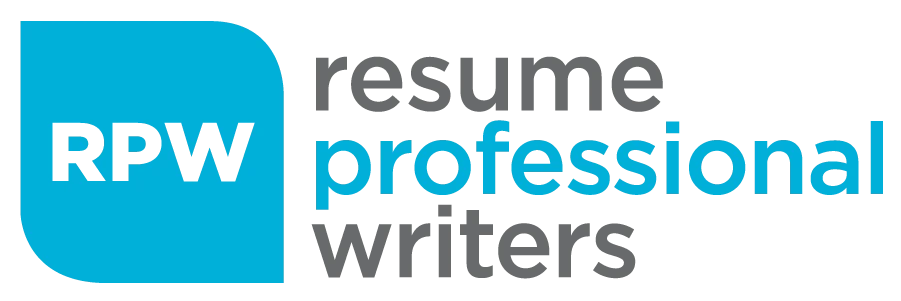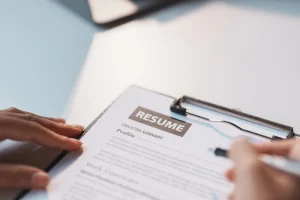A cover letter is more than just an introduction to your resume—it’s an opportunity to convey your unique story, demonstrate your passion, and present a compelling case for why you’re the best candidate for the role. Effective cover letter writing can be the key to getting noticed rather than overlooked. This comprehensive guide will walk you through every step of the process, from understanding its purpose to mastering personalization, ensuring your cover letter grabs attention and resonates with hiring managers.

The Power of a Well-Written Cover Letter
Despite the digital shift in job applications and the increasing prevalence of online forms, the cover letter remains a crucial element of the application process. Studies have shown that recruiters spend only a few seconds scanning each application. In that brief moment, your cover letter must capture interest, highlight your most relevant achievements, and convey a sense of your professional personality. A thoughtfully written cover letter can:
- Set you apart from other applicants.
- Showcase your communication skills and attention to detail.
- Demonstrate your understanding of the company’s culture and the role you’re applying for.
- Provide context for your resume, explaining career transitions or gaps.
The purpose of this guide is to provide you with a deep, research-backed understanding of how to write a cover letter that is both engaging and effective. Whether you’re a seasoned professional or a recent graduate, the strategies outlined below are designed to help you make a lasting impression.
Understanding the Role of a Cover Letter
Before diving into the mechanics of writing, it’s important to grasp why cover letters are so significant. A cover letter serves several key functions:
1. Personal Branding and First Impressions
Your cover letter is often your first interaction with a potential employer. It’s an opportunity to establish your personal brand and set the tone for your application. A compelling cover letter communicates not just what you’ve done but who you are as a professional.
2. Bridging the Gap Between Your Resume and the Job Description
A resume provides a concise summary of your work history and skills, but it can’t fully capture your personality or explain the context behind your achievements. This is where cover letter writing becomes essential—your cover letter bridges the gap by linking your past experiences to the specific requirements of the job, illustrating how your unique background makes you an ideal fit.
3. Demonstrating Your Interest and Knowledge
Hiring managers appreciate candidates who take the time to understand the company’s mission and how their role contributes to broader business objectives. Learning how to write a cover letter effectively allows you to demonstrate that you’ve done your homework—showing that you’re not just applying for any job, but that you’re genuinely interested in the specific opportunity and how you can add value.

Preparing to Write: Research and Self-Reflection
A standout cover letter is rooted in thorough research and self-reflection. Taking the time to gather relevant information and reflect on your career goals can significantly elevate the quality of your letter.
1. Researching the Company and Job Role
Before you begin writing, immerse yourself in the company’s background:
- Visit the Company’s Website: Familiarize yourself with their mission, values, recent news, and overall culture.
- Study the Job Description: Identify the key skills and experiences the employer is looking for. Look for repeated phrases or specific requirements that you can address in your letter.
- Explore Industry Trends: Understanding the broader industry context can help you articulate how your skills align with current market demands.
2. Reflecting on Your Career Journey
In cover letter writing, it’s important to consider your professional trajectory and what you want to communicate:
- Identify Your Unique Selling Points: What achievements or experiences set you apart? Reflect on projects, roles, or initiatives that highlight your strengths.
- Pinpoint Relevant Experiences: Choose examples that directly relate to the job you’re applying for. This will ensure your cover letter is both focused and persuasive.
- Clarify Your Career Objectives: Understanding your own goals will help you articulate how the position fits into your long-term career plan.
3. Gathering Data and Insights
Incorporating data and specific examples can significantly boost the credibility of your cover letter:
- Quantify Achievements: Use metrics such as percentage growth, revenue increases, or efficiency improvements to illustrate your impact.
- Cite Industry Trends: Mention benchmarks or trends that reinforce the importance of your skill set.
- Collect Testimonials: Briefly reference any positive feedback or accolades that underscore your professional reputation.
The Anatomy of a Cover Letter
A key part of mastering how to write a cover letter is understanding its standard format while recognizing the opportunities for personalization. Here’s a breakdown of the essential elements that make a cover letter both structured and uniquely yours:
1. Header and Contact Information
Begin with a professional header that includes:
- Your Name and Contact Information: Address, phone number, and professional email.
- Date: The date on which you’re writing the letter.
- Employer’s Details: The hiring manager’s name (if available), company name, and company address.
This not only ensures clarity but also aligns with professional business correspondence standards.
2. Salutation
Whenever possible, address your letter to a specific person. Using “Dear [Hiring Manager’s Name]” instead of a generic greeting like “To Whom It May Concern” demonstrates your attention to detail and respect for the recipient. If you cannot find a name, “Dear Hiring Team” is a suitable alternative.
3. The Opening Paragraph
Your opening paragraph is your chance to hook the reader:
- Express Enthusiasm: Clearly state the position you are applying for and why it excites you.
- Introduce Yourself: Briefly mention your current role or background to set the context.
- Reference a Connection: If you have a mutual connection or learned about the job through a specific channel, mention it here.
4. The Body Paragraphs
This is a key part of cover letter writing, where you delve into the specifics of your qualifications and explain how they relate to the job:
- Highlight Key Experiences: Use one or two paragraphs to detail your most relevant achievements. Be specific and use quantifiable results when possible.
- Showcase Your Skills: Draw connections between the job requirements and your professional skills. Discuss how your expertise can address the company’s challenges or goals.
- Tell a Story: Instead of merely listing your achievements, narrate a concise story that illustrates your problem-solving abilities, adaptability, or leadership qualities.
5. The Conclusion
The concluding paragraph should be a call-to-action:
- Reiterate Your Interest: Summarize why you are a strong fit for the role.
- Suggest a Next Step: Politely express your desire for an interview and indicate your availability for further discussion.
- Thank the Reader: End on a courteous note, thanking the hiring manager for considering your application.
6. Closing and Signature
Finish with a professional closing such as “Sincerely” or “Best Regards,” followed by your full name. If you’re submitting a hard copy, leave space for your handwritten signature above your typed name.

Crafting an Engaging Cover Letter: Tips and Strategies
With the structure in place, the next step in how to write a cover letter is ensuring that it truly engages the reader. Here are some effective strategies to make your letter stand out:
1. Personalization Is Key
Avoid sending out a generic cover letter for multiple applications. Tailor each letter to the specific role and company:
- Match the Tone: Adjust your writing style to align with the company’s culture. A tech startup might appreciate a modern, conversational tone, while a law firm may expect a more formal approach.
- Address Specific Needs: Reference particular challenges or projects mentioned in the job description and explain how your background equips you to handle them.
- Mention Company Achievements: If the company recently won an award or launched a new product, acknowledging this can show that you’re up-to-date and genuinely interested.
2. Be Concise Yet Impactful
While it’s important to be thorough, avoid unnecessary fluff. Each sentence should serve a purpose:
- Focus on Value: Concentrate on how your experiences can benefit the employer. Don’t simply restate your resume; instead, provide context and insights.
- Use Active Language: Verbs such as “led,” “developed,” and “implemented” convey action and achievement.
- Keep Paragraphs Manageable: Aim for short paragraphs and clear transitions to maintain readability.
3. Demonstrate Cultural Fit
Employers are not only evaluating your skills—they’re also assessing whether you’ll be a good fit within their team:
- Highlight Soft Skills: Mention qualities like teamwork, leadership, or adaptability, and back them up with real examples.
- Align With Company Values: Show that your personal values resonate with the company’s mission. For instance, if innovation is a key aspect of the company culture, discuss instances where you introduced new ideas or improved processes.
4. Incorporate Data and Results
Numbers speak louder than words. Including quantifiable achievements adds credibility to your claims:
- Use Metrics: For example, “Increased sales by 20% over six months” is far more persuasive than “improved sales.”
- Provide Context: Briefly explain the challenges you faced and the results you achieved, making sure the data is relevant to the job you’re applying for.
5. Use a Professional Yet Conversational Tone
While learning how to write a cover letter, remember that it should remain formal yet still reflect your personality:
- Avoid Jargon Overload: Use industry-specific terminology where appropriate, but ensure your language is clear and accessible.
- Be Authentic: Let your genuine interest and enthusiasm shine through. A well-written cover letter should feel personal and sincere rather than overly rehearsed.
- Maintain Clarity: Ensure that your writing is free of grammatical errors and typos. Proofreading is essential to maintain professionalism.
Common Mistakes to Avoid
Even the best candidates can falter by making some common errors. Awareness of these pitfalls can help you avoid them:
1. Generic Content
Sending out a one-size-fits-all cover letter signals a lack of genuine interest. Customize each letter to the role and company.
2. Overly Long or Wordy Letters
While detail is important, overly lengthy letters may lose the reader’s attention. Strive for a balance—include enough detail to convey your value without overwhelming the reader.
3. Repetition of Resume Content
Your cover letter should complement your resume, not duplicate it. Use the letter to provide context for your achievements rather than listing every detail.
4. Lack of Proofreading
An important tip in mastering how to write a cover letter is to avoid spelling or grammatical errors, as they can create a negative impression. Always review your letter multiple times and consider asking a trusted colleague or mentor for feedback.
5. Failing to Follow Instructions
Some job postings include specific instructions regarding the cover letter. Failing to adhere to these can be an immediate disqualifier. Always ensure you follow any formatting, length, or content guidelines provided by the employer.

Advanced Tips for a Next-Level Cover Letter
For those looking to push beyond the basics and truly stand out, consider these advanced strategies:
1. Craft a Compelling Narrative
In cover letter writing, aim to tell a story that connects your past experiences with your future potential. This narrative should illustrate how a particular moment or challenge in your career has prepared you for the role you’re applying for.
- Narrative Techniques: Begin with a brief anecdote that highlights a key achievement or learning moment. Then, draw parallels to how that experience equips you to handle the challenges of the new role.
- Emotional Connection: Aim to create an emotional resonance with the reader, making your application memorable.
2. Integrate Visual Elements (Where Appropriate)
While most cover letters are text-based, when writing a cover letter, consider including subtle design elements that reflect your personal brand:
- Consistent Formatting: Use a clean, professional template that matches the style of your resume.
- Typography: Choose professional fonts and appropriate spacing to enhance readability.
- Branding Touches: If you have a personal logo or color scheme, integrate these elements subtly into your header or footer.
3. Addressing Gaps or Career Transitions
If you have gaps in your employment history or are making a career shift, writing a cover letter gives you the opportunity to address these areas proactively:
- Contextualize the Gap: Briefly explain the reason for the gap—whether it was for further education, family care, or personal development—and highlight any relevant skills or experiences gained during that period.
- Emphasize Transferable Skills: When switching industries, focus on the skills that are applicable across different fields. Explain how your diverse background offers a unique perspective that can benefit the employer.
4. Tailoring for Different Application Methods
In cover letter writing, it’s important to stay flexible—depending on the application process, you might need to adapt your cover letter:
- Email Applications: When sending your cover letter via email, include a brief introduction in the email body and attach a formatted version as a PDF.
- Online Portals: Some application systems require you to paste your cover letter into a text box. In these cases, ensure that your formatting remains clear even without advanced design elements.
Examples and Templates
For additional inspiration and to see how different approaches can be tailored for various roles, you might consider exploring our comprehensive cover letter examples. Below are sample outlines and excerpts to illustrate the process.
Sample Outline
- Header:
- Your Name
- Address
- Phone Number
- Email Address
- Date
- Hiring Manager’s Name
- Company Name
- Company Address
- Salutation:
- “Dear [Hiring Manager’s Name],”
- Opening Paragraph:
- Introduce yourself, state the position, and mention how you learned about the opportunity.
- Example: “I am writing to express my interest in the Digital Marketing Manager position at [Company Name] as advertised on [Platform]. With a robust background in digital strategy and proven success in campaign management, I am excited about the opportunity to contribute to your team.”
- Body Paragraphs:
- First Body Paragraph: Highlight your most relevant achievements.
- Example: “At [Previous Company], I led a team that increased online engagement by 40% within one year by implementing innovative social media strategies.”
- Second Body Paragraph: Connect your skills to the job requirements.
- Example: “My expertise in data analysis and customer segmentation enabled me to drive targeted marketing initiatives that resulted in a 25% boost in conversion rates.”
- Optional Third Body Paragraph: Address any career transitions or additional relevant experiences.
- First Body Paragraph: Highlight your most relevant achievements.
- Closing Paragraph:
- Reiterate your interest and suggest a meeting.
- Example: “I am eager to bring my strategic vision and collaborative spirit to [Company Name]. I welcome the opportunity to discuss how my background aligns with your needs in more detail.”
- Reiterate your interest and suggest a meeting.
- Closing:
- “Sincerely,”
- [Your Name]
Brief Example Excerpt
Dear Ms. Johnson,
I am writing to apply for the Marketing Specialist position at XYZ Corporation. With over five years of experience in digital marketing and a proven record of increasing brand awareness through innovative online strategies, I am confident in my ability to contribute to your team’s success. In my previous role at ABC Enterprises, I spearheaded a project that boosted website traffic by 30% and enhanced customer engagement through targeted campaigns.

Industry-Specific Examples: Tailoring Your Cover Letter
One of the most effective strategies when writing a cover letter is to customize it for the specific industry or position. Below are several examples tailored to different fields and roles:
1. Technology – Software Engineer
Opening Paragraph Example:
Dear Mr. Carter,
I am excited to apply for the Software Engineer position at Innovatech Solutions. With a Bachelor’s degree in Computer Science and three years of hands-on experience in full-stack development, I have honed my ability to build robust and scalable applications. At my current role with TechForge, I led a team that developed a microservices architecture, reducing system downtime by 35% and significantly improving user experience.
Key Points to Highlight:
- Technical Expertise: Mention specific programming languages and frameworks (e.g., Python, JavaScript, React).
- Problem-Solving: Detail instances where you resolved complex bugs or improved system performance.
- Project Impact: Use quantifiable metrics like “35% reduction in downtime” to substantiate your achievements.
2. Marketing – Digital Marketing Manager
Opening Paragraph Example:
Dear Ms. Rivera,
I am writing to express my keen interest in the Digital Marketing Manager position at BrightWave Media. With over six years in the digital marketing arena and a proven track record of boosting online engagement by up to 40%, I am excited about the prospect of leveraging my expertise to drive innovative campaigns at BrightWave. My background in SEO, PPC, and content strategy has equipped me to develop targeted initiatives that consistently surpass performance benchmarks.
Key Points to Highlight:
- Campaign Successes: Detail successful marketing campaigns and include statistics such as percentage increases in engagement or conversions.
- Multi-Channel Expertise: Highlight your skills across various digital platforms.
- Leadership: Emphasize experience managing teams or coordinating cross-functional projects.
3. Finance – Financial Analyst
Opening Paragraph Example:
Dear Mr. Patel,
I am eager to apply for the Financial Analyst position at Meridian Capital. Holding a Master’s degree in Finance and with three years of experience in financial modeling and risk assessment, I have successfully identified key market trends and implemented cost-saving strategies that have saved previous employers over $500,000 annually. I am confident that my analytical skills and attention to detail will add significant value to Meridian Capital’s financial strategy.
Key Points to Highlight:
- Quantitative Achievements: Use figures to demonstrate your success, such as the savings achieved.
- Analytical Skills: Mention expertise in financial software or data analysis tools.
- Industry Knowledge: Connect your understanding of market trends to the role’s requirements.
4. Healthcare – Registered Nurse
Opening Paragraph Example:
Dear Hiring Manager,
I am writing to apply for the Registered Nurse position at Green Valley Hospital. With over five years of direct patient care experience and certifications in critical care and emergency response, I have a deep commitment to delivering compassionate and efficient healthcare. In my current role at City Medical Center, I managed a high-volume unit and successfully reduced patient recovery times by streamlining communication between multidisciplinary teams.
Key Points to Highlight:
- Patient Care Experience: Emphasize your hands-on clinical skills and certifications.
- Efficiency Improvements: Mention any initiatives that improved patient outcomes or operational efficiency.
- Team Collaboration: Highlight your ability to work effectively within healthcare teams.
5. Education – High School Teacher
Opening Paragraph Example:
Dear Principal Williams,
I am excited to submit my application for the High School English Teacher position at Lincoln High School. With a Master’s degree in Education and eight years of classroom teaching experience, I have developed innovative teaching methods that increase student engagement and academic performance. My commitment to fostering an inclusive learning environment has resulted in a 15% increase in student literacy rates at my current school.
Key Points to Highlight:
- Teaching Innovation: Detail creative strategies or curriculum improvements you have implemented.
- Student Success: Use measurable outcomes to underscore your impact on student learning.
- Professional Development: Emphasize continuous learning and your commitment to educational excellence.
6. Creative Industries – Graphic Designer
Opening Paragraph Example:
Dear Ms. Thompson,
I am thrilled to apply for the Graphic Designer role at CreativePulse Agency. With a Bachelor’s degree in Graphic Design and four years of professional experience, I have developed a portfolio that reflects both innovative design and strategic brand storytelling. At my current agency, I redesigned the visual identity for multiple clients, which led to a 25% increase in brand recognition and engagement across digital platforms.
Key Points to Highlight:
- Portfolio Highlights: Mention successful projects or recognitions.
- Design Tools: List relevant software expertise (e.g., Adobe Creative Suite, Sketch).
- Brand Impact: Use data to showcase improvements in client brand performance.

Your Cover Letter as a Career Tool
Crafting an outstanding cover letter is both an art and a science. When writing a cover letter, you need to balance detailed, data-driven insights with a narrative that reflects your professional personality and aspirations. As you embark on your job search, keep these key takeaways in mind:
- Invest in Research: Understand the company, its culture, and the specific needs of the role.
- Be Authentic: Use your cover letter to tell a compelling story that only you can tell.
- Focus on Value: Clearly articulate how your skills and experiences align with the employer’s goals.
- Revise Relentlessly: Continuous improvement is the hallmark of a great professional. Treat your cover letter as a living document that evolves with your career.
Final Thoughts
A well-written cover letter can open doors and create opportunities that might otherwise remain closed. When writing a cover letter, remember that it’s not just a summary of your qualifications—it’s a personal pitch that communicates your vision, drive, and readiness to contribute meaningfully to a new role.
By following the steps outlined in this guide and consistently refining your approach, you’ll be well on your way to crafting cover letters that not only complement your resume but also tell a story of ambition, expertise, and readiness to take on new challenges.
Boost Your Hiring Chances with a Well-Thought Cover Letter
Embracing the process of crafting your cover letter is an investment in your personal narrative. With thoughtful research, careful writing, and continuous refinement, you can transform your cover letter from a simple formality into a powerful tool that unlocks new opportunities and showcases your unique professional journey.
For added inspiration, explore our collection of cover letter examples, offering tailored approaches for a variety of roles and industries. If you’re seeking a more personalized touch, our professional cover letter writing services can help you transform your draft into a compelling narrative. Additionally, our comprehensive resume writing services include a custom cover letter designed to elevate your professional profile and make a lasting impression.
Ready to take the next step? Contact us today to craft a cover letter that sets you apart from the competition.








